Fresh, low-moisture, shredded, in a log — what kind of mozzarella are you supposed to buy? Experts share the answers.
At Capella Cheese shop in Atlanta, mozzarella is made fresh daily. Brittany Billups places curds in a bucket before dousing them in 190-degree Fahrenheit water. She swishes the curds around with salt and adds more water until the curds melt and the mixture takes on a dough-like consistency.
“It’s handmade, small batch,” said Raymond Hook, a cheesemonger and the shop’s owner. “The most important thing is that the mozzarella maker can feel the texture, and when they’re pulling the curds they can see that they’re melting.”
The root of mozzarella, mozzare, means “to cut off” and that’s what Billups does: She stretches the cheese and cuts off pieces that form spheres — anywhere from golf ball to baseball-sized — that get dropped into room-temperature water (though eating it warm is a treat).
Freshly made mozzarella is a luxury, and usually when we’re shopping for the white cheese, we’re at the grocery store, where there are seemingly dozens of choices. So, where to begin? We chatted with a few experts to help make our cheese decisions easier.
First, a disclaimer: There are technically 12 types of mozzarella, but we won’t be getting so in-depth here, as those names don’t always translate to what we see in the grocery store.
Fresh Mozzarella
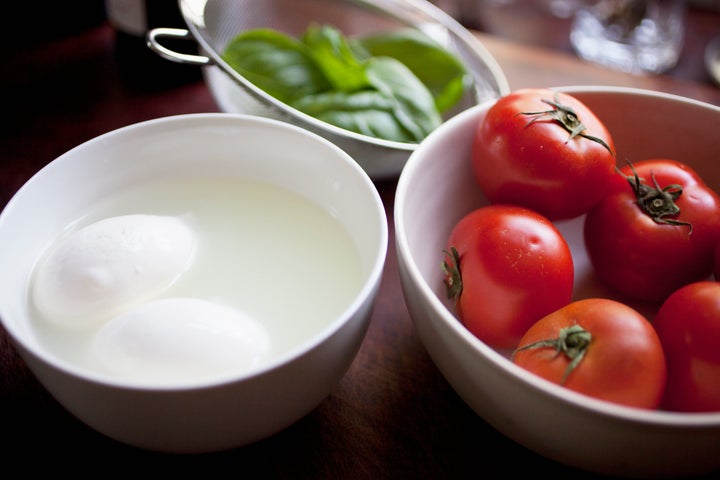
When you see a mozzarella ball in a tub of water, that’s fresh mozzarella. It can be made with water buffalo milk, which gives the cheese a rich flavor, but it’s harder to find that variety as the cheese is typically imported from Italy (though Buf Creamery in Colombia produces buffalo mozzarella that can be found at most major U.S. grocery stores).
Fresh mozzarella is more commonly made with cow’s milk and is known for having a springy texture, a slight chew on the outside and a creamy, bright, slightly salty flavor. This type of mozzarella tends to be more expensive, but can be a worthy splurge if you plan on making something where mozzarella is the star. “If the dish is going to be eaten fresh, then that’s what you want. You want the highly perishable, super delicious, precious stuff,” said Virginia Willis, a chef and James Beard Award-winning cookbook author.
When it’s time to use the cheese, you’ll want to drain off the liquid, said Dan Jackson, the executive chef of Osteria Georgi in Chapel Hill, North Carolina. Don’t drain and slice it too far in advance, though, he said, as you want it to retain some of its moisture when you serve it.
Fresh mozzarella in water is also ideal for a caprese salad, where the cheese really shines. But if that’s not possible, then look to the next best option…
Mozzarella Log
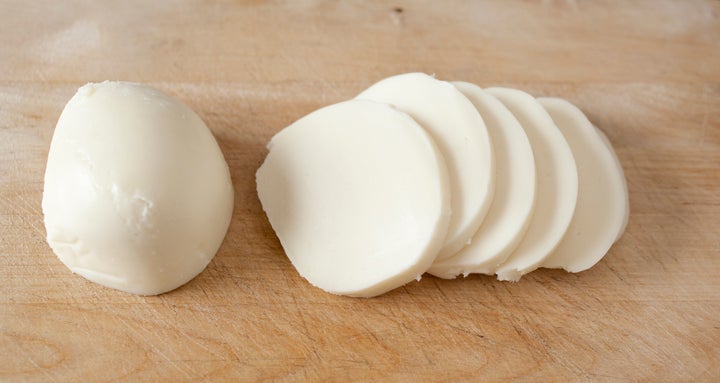
With a little bit of a longer shelf life than the water-soaked mozzarella, the cheese found in a log has slightly lower moisture while still maintaining a nice texture and fresh taste.
While fresh mozzarella is recommended to be eaten as is, a log does well at both room temperature and baked in a gooey, cheesy pasta dish. It’s great for topping off eggplant and chicken Parmesan dishes, and for caprese salads. “I think that caprese is a great example of a dish that it’s so simple, but it relies solely on the quality of your ingredients,” Jackson said.
Low-Moisture Mozzarella Block

This one’s for melting!
Willis always has a block of low-moisture mozzarella on hand. “It’s good for everything from pizza, to a quesadilla, to a decent grilled cheese sandwich,” Willis said. “It’s got a great meltability factor.” She points out that a low-moisture block of mozzarella cheese doesn’t compare to the quality of fresh mozzarella, but it’s a great staple to keep on hand because what it lacks in flavor it makes up for with shelf life, longevity and practicality.
When it comes to choosing a package of low-moisture mozzarella, Lauren Shea, a registered dietitian based in Atlanta, said to keep an eye on the sodium content. “It’s usually much, much higher in processed cheeses. And that could be shredded cheeses, or even string cheese. Not to say they’re not a great healthy snack, because I think when it comes to mozzarella cheese, the beauty of it is that it is so versatile,” she said.
She encourages those without dietary restrictions to opt for full-fat, fresh mozzarella when possible, because the fat content will increase fullness, the sodium is lower and there are fewer additives compared with processed cheese. But, in moderation, the processed cheese can be OK.
Shredded Mozzarella
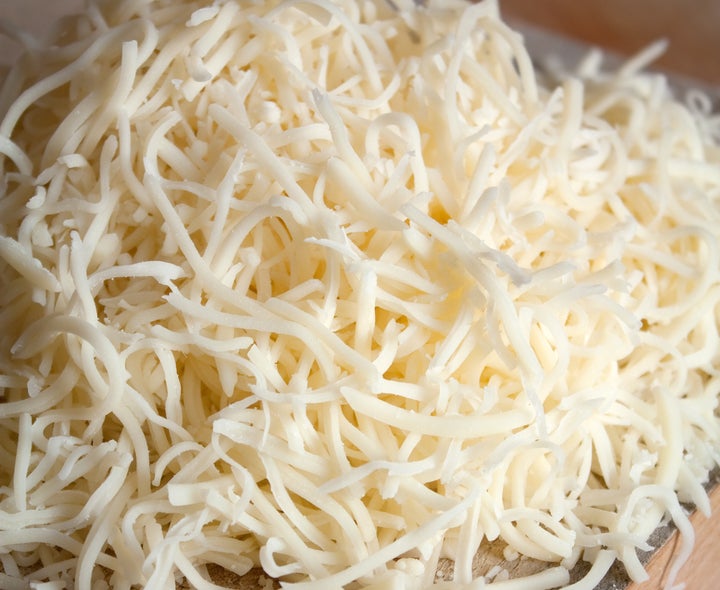
Even shredded mozzarella plays a role in the kitchens of chefs. “You’re going to see that a lot more in a traditional Italian-American pizza. It’s great because it’s very low moisture and melts easily without burning,” Jackson said.
He makes a fondue at his restaurant that uses a lot of different cheeses and he finds that adding shredded mozzarella gives it more consistency. (The sauce does not rely on the shredded mozzarella for flavor, though, which comes from the other cheeses like fontina.) “But shredded mozzarella is a workhorse in the commercial and home kitchen,” Jackson told HuffPost.
One thing to be aware of with shredded mozzarella is that it’s often coated in a starch such as cellulose or potato flour to prevent caking. “I find that it’s not enough to significantly affect a recipe,” Willis said. “Frankly, manufacturers have hit the sweet spot with the coating.”
If it is a concern, though, you could shred your own mozzarella by hand. “Obviously, it’s super important for allergens, but I’ve never noticed a difference in a serving of yummy, gooey melted cheese,” Willis said.
Mozzarella Pearls (Ciliegine)
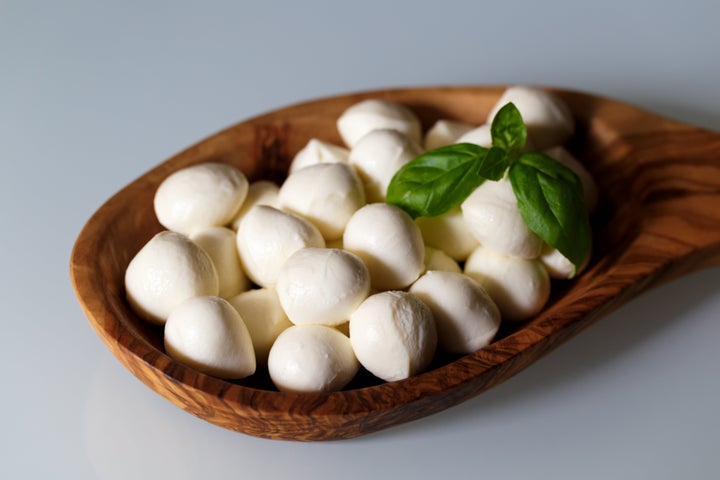
Ciliegine is a pearl-sized ball of mozzarella and is found in liquid-filled tubs. Willis finds that this variation of mozzarella provides a nice alternative in salads. Instead of a traditional caprese salad, Willis will use the mozzarella pearls (or the slightly larger bocconcini), chopped tomatoes and basil to make more of a chopped salad.
“You put some olive oil and garlic, and salt and pepper, and it sort of stews in its own juices. And then the cheese winds up marinating in the tomato juice,” Willis said. “And I think it’s actually a lot more flavorful than just something that’s sort of put quickly on a plate and just a little bit of balsamic.”
Burrata
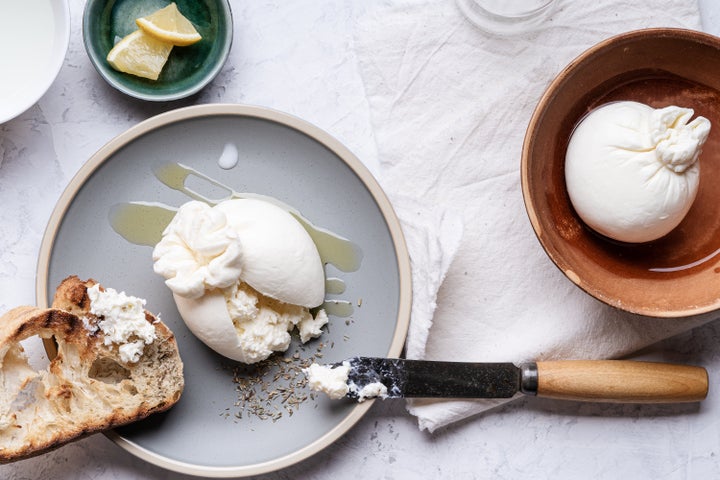
Burrata is a leveled-up version of mozzarella. It’s a mozzarella shell filled with fior di latte (sweetened cream) and cheese curds. When you buy it, you need to use it quickly and don’t plan on having leftovers. “You should never cook with it. It should just be table fresh,” Hook said. You can serve burrata atop salads and pizza, but it’s perhaps best enjoyed in a shallow bowl with a drizzle of olive oil, a sprinkle of flaky sea salt and a basil garnish alongside thick bread.
Credit: Source link